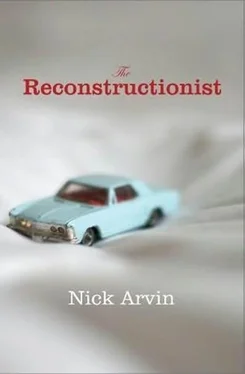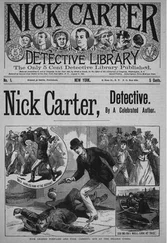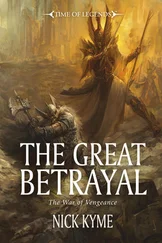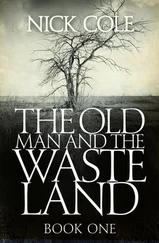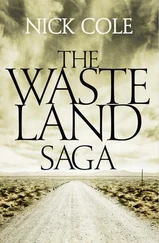‘Well, there is no way to know. I’m just warning you, it’s odd. You look at terrible events and analyse them minutely. It’s not normal. It’s strange. Then, after you’ve done it for a while, what’s also strange is how you get used to it, and even how much you forget. It seems a little indecent to forget. That’s what bothers me, now. It’s as if, if I were a better man, I’d go back to tour the old accidents from time to time. Like those old soldiers revisiting the Somme or Gettysburg or Vietnam. Austerlitz. But no one remembers Austerlitz any more.’ He looked hopefully at Ellis, as if he might be the exception.
Ellis admitted that he didn’t remember Austerlitz.
By the time he left, Boggs had offered the job outright, and Ellis had accepted. In the parking lot he stopped to look again at the aqua-blue SUV. He scrutinised a few of the scratches, then leaned through the vacant space where a window had been. A strand of gleaming purple and green Mardi Gras beads was wrapped around the gear shift. Black tyre shards and an empty can of diet soda littered the cargo area. Dry leaves lay on the back seat, along with a yellow receipt that was, he saw, from Babies R Us. He returned to his car and sat, lightly touching his hands together, hesitating now to drive into traffic, onto the streets, the interstate. But after a minute he started the engine, and he drove.
Ellis had largely fallen out of touch with his father, so that was easy. He spoke regularly with his mother, but he waited until he had already accepted the job and begun working before he told her about it. He worried that she might think of Christopher’s death and disapprove of this work; perhaps she would articulate certain objections that he had not yet articulated to himself. But she only asked what his salary would be. He told her, and she sounded happy, and soon she was complaining that the neighbour’s cottonwood was dropping branches onto her lawn, and Ellis thought, maybe that’s all it needs to be – a job.
Later, after years, it seemed to him almost as if he had always been a reconstructionist, and he recalled only with effort that at one time it had been new to him, that it had felt like entering an obscure nation with its own language, customs and peculiar manner of thinking. On his first day Boggs had handed him a stack of technical papers – ‘A Comparison Study of Skid Marks and Yaw Marks’, ‘Physical Evidence Analysis and Roll Velocity Effects in Rollover Accident Reconstruction’ and ‘Speed Estimation from Vehicle Crush in Side Pole Impacts’. Even the word reconstructionist felt odd in the mouth.
Ellis sat at a desk in a cubicle with five-foot-high foam-core walls, two shelves for books, two file drawers, a computer and a telephone. It was one cubicle in a grid of twelve, each occupied by an engineer. ‘Eggheads in a carton,’ Boggs called it. Around the periphery of the room were a handful of walled offices where the senior engineers sat. At the rear of the building a wide door accessed an underground garage where items of physical evidence were stored: car seats burned down to their internal steel frames, pieces of exploded tyres, dismantled disc brakes, shatterproof windows glittering with cracklines, a fuel tank cut into halves for examination, a Honda motorcycle improbably twisted, a Dodge pickup truck blooming with front and rear collisions.
Ellis had projects occasionally with some of the other engineers, but for the most part he worked directly with Boggs, and he acquired the skills of the job by doing the job with Boggs. Boggs was at once boss, mentor and co-worker, and he performed these roles with patience and humour. Ellis never felt as if he were being tested or made a fool of. From the day he started, he never seriously feared for his job. He grew used to the word reconstructionist. He learned the nomenclature. When Boggs, as testifying expert, went to have his opinions taken outside of court it was at a deposition, which was called a depo, or sometimes just a dep. The pillars connecting a vehicle’s body to its roof were named alphabetically from front to back: A-pillar, B-pillar, C-pillar, and sometimes a D-pillar. A change in velocity due to a collision was a delta-V; conservation of linear momentum was COLM; primary direction of force was PDOF. The people in a vehicle were occupants. Anyone thrown from a vehicle in the course of an accident was ejected. The dead were occupants or pedestrians who had sustained fatal injuries, or, simply, fatalities. He learned the methodologies of crush-energy analysis and momentum-based analysis, how to calculate speed loss during braking, how to incorporate perception-reaction time into a time-space analysis. He learned photogrammetric techniques for identifying the locations of objects on the roadway that the police had failed to record, and he learned how to download data from airbag modules, how to examine tyres and brakes for evidence of defects or improper maintenance, how to look at light bulbs and seat belts for indications that they were in use at the time of a collision, how to document the damage to a car, how to build computer models of vehicles and terrains, how to generate data describing motion and impacts.
There were slow days, and days spent reading maddeningly useless depositions, days spent working out some trivial but necessary and elusive problem of mathematics or physics, days spent trying to find a source for obscure information on decades-old frame rails or fuel tank designs, days spent travelling between obscure towns amid empty plains in order to take a few photos and measurements of dubious utility. But even these days held at least a possibility of discovering something of significance, of seeing a problem in a new way or coming upon some small, critical, overlooked evidence. Ellis liked the work. It reminded him of the books he enjoyed, stories of sharp-eyed detectives, stories of worlds a little separated from the usual one. At intervals he came across an accident-scene photograph – a bloodstain on the road, a tooth alone on a car seat, a body burned past recognising – that made him cold in his bones and reminded him of his reservations, and at these times it again seemed possible that this was the last job on earth that he should have. But this feeling came to him less often as time passed, as case files accumulated and accident-scene photographs overlaid one another and grew indistinct.
Ellis discovered that Boggs didn’t generally keep friends – he could be too overbearing, too blunt, too indifferent, too silent. But somehow, because Ellis worked for him and because Boggs loved working, Ellis was largely shielded from these traits. Moreover, they were often seated side by side for long periods – in airports, airplanes, rental cars and hotel bars as they travelled to inspect accident scenes and vehicles – and the travel demands of the job curtailed other relationships even as the two of them were pushed together. They joked easily, and they could be silent easily. As years passed and Ellis came to understand the work and to participate in it with the efficiency of familiarity, they also began to go together to occasional baseball games, or pike fishing, or funny car races. They had a habit of long, desultory conversations called from desk to desk late in the office when everyone else had left. Sometimes these seemed to Ellis almost a dream of voices in the head.
‘One of the problems between my wife and me,’ Boggs said once, out of a long silence, startling Ellis, ‘is over kids. What do you think about kids?’
‘I don’t know. They’re pretty cute. I guess sometimes I get tired of their noise on airplanes.’
They were in the middle of the inspection of an exemplar Silverado, an undamaged pickup of make, model, year and option package identical to that of another pickup which had been struck head-on and burst into flames when a drunk drifted across the double yellow line. They would use measurements from the exemplar for comparison purposes. Boggs stood on a ladder, above the hood, shooting photos downward while Ellis held a measuring tape against the vehicle one way, then another. They were interested in the precise curve of the bumper. Boggs called, ‘I really don’t like them when they’re little. Like village idiots. You can’t have a real conversation.’
Читать дальше
